CARTS TOP 200 Adult Books for Young Adults
ALA Editions purchases fund advocacy, awareness, and accreditation programs for library professionals worldwide.
CARTS TOP 200
ADULT BOOKS FOR YOUNG ADULTS
TWO DECADES IN REVIEW
MICHAEL CART
 An imprint of the American Library Association // Chicago // 2013
An imprint of the American Library Association // Chicago // 2013
MICHAEL CART is a nationally known expert in young adult literature, which he taught at UCLA before moving to the Midwest. A columnist and reviewer for ALAs Booklist magazine, he is also the author or editor of twenty books and countless articles that have appeared in the New York Times, the Los Angeles Times, the San Francisco Chronicle, Parents magazine, American Libraries, School Library Journal, and elsewhere. The former president of both YALSA and ALAN, Cart is the recipient of the 2000 Grolier Award and the first recipient, in 2008, of the YALSA/Greenwood Publishing Group Service to Young Adults Award. He appointed and chaired the task force that created the Michael L. Printz Award, and he subsequently chaired the 2006 Printz Committee.
2013 by the American Library Association. Any claim of copyright is subject to applicable limitations and exceptions, such as rights of fair use and library copying pursuant to Sections 107 and 108 of the U.S. Copyright Act. No copyright is claimed for content in the public domain, such as works of the U.S. government.
Extensive effort has gone into ensuring the reliability of the information in this book; however, the publisher makes no warranty, express or implied, with respect to the material contained herein.
ISBNs: 978-0-8389-1158-7 (paper); 978-0-8389-9625-6 (PDF); 978-0-8389-9626-3 (ePub); 978-0-8389-9627-0 (Kindle). For more information on digital formats, visit the ALA Store at alastore.ala.org and select eEditions.
Library of Congress Cataloging-in-Publication Data
Cart, Michael.
Carts top 200 adult books for young adults : two decades in review / Michael Cart.
pages cm
Includes bibliographical references and index.
ISBN 978-0-8389-1158-7
1. TeenagersBooks and readingUnited StatesBibliography. 2. Best BooksUnited States. I. Title. II. Title: Carts top two hundred adult books for young adults. III. Title: Top 200 adult books for young adults.
Z1037.C335 2013
011.62dc23
2012027260
Cover design by Casey Bayer. Cover image Timofeyev Alexander / Shutterstock, Inc.
For Amanda and Alex
CONTENTS
I took my first professional job in 1967, working as the assistant director of the LogansportCass County (Indiana) Public Library. Yes, that was my hometown library, and as a compulsive browser even as a child, I was thoroughly familiar with its collections, with what they contained and with what they didnt contain. This may be why one of the first tasks I set myself was developing a separate collection of books for teenage readers, a population whose reading needs and interests had previously been met by a few shelves of genre fiction that consisted mainly of romances by the likes of Janet Lambert, Betty Cavanna, and Rosamond du Jardin. Oh, there were also some sports stories, mostly by John R. Tunis; science fiction, mostly by Robert A. Heinlein and Andre Norton; and adventure, mostly by Howard Pease and Jim Kjelgaard. Today we might regard these books as demi-classics in their respective genresat least contemporary collectors do, judging by the prices theyre willing to pay for first editions of them. But back then they seemed to me to be quick, disposable reads, more suitable for elementary school kids than for adolescents.
My opinion may, of course, have been rooted in my own reading development. I had read this type of genre fiction when I was in grade school but when I finished sixth grade, I graduated to the world of adult books. I claim no particular precocity in doing this, since kids had been reading adult books since at least the seventeenth and eighteenth centuries and the publication of books like John Bunyans Pilgrims Progress, Jonathan Swifts Gullivers Travels, and Daniel Defoes Robinson Crusoe.
I didnt regret saying goodbye to these early teen books, though I never dismissed them as being baby books, as some teenagers have over the years. On the other hand I certainly didnt regard them as having much literary merit or posing any particular challenge to high schoolage readers. So where to turn to find the constituents of my new collection? The answer was simple: I turned to adult books.
I was hardly alone in thinking adult books perfectly suitable for teens. The same year (1967) that I was busy forming my collection, G. Robert Carlsens Books and the Teen-Age Reader: A Guide for Teachers, Librarians, and Parents and he devoted nearly two-thirds of his book to adult literature.
Ironically, 1967 was the same year that a new kind of literature began to emerge that was suitable for teenagers; I just didnt know about it then. Im referring, of course, to young adult literature, which seemed to appear overnight with the publication of two landmark books: S. E. Hintons The Outsiders and Robert Lipsytes The Contender. This literature differed from the earlier teen literature in its unsparing realism and appeal to teens of high school age.
Not knowing this, however, I made adult books the main focus of the new collection, though I did include a selection of the genre fiction mentioned above, knowing that some readers would find it entertaining and accessible.
Joining Carlsen and me in our focus on adult books was ALA, which had been including adult titles on its lists of best books for teenage readers since 1930, when it established its Young Peoples Reading Round Table (young people in this context meant teenagers). Because there was no literature for this specific age group at that time, the Round Tables annual list of best books included a sometimes uneasy mix of adult and childrens books, ranging from Will Jamess Lone Cowboy to Edna Ferbers Cimarron.
This situation continued until 1948 when, acknowledging that 12- to 18-year-olds had no interest in books for children, the lists name was changed to Adult Books for Young People. In 1966 it was changed again to Best Books for Young Adults (BBYA), though the list continued to be exclusively one of adult books until 1973, when the ALAs Young Adult Services Division (now YALSA) began including books published specifically for young adults.
Since that time there has been considerable discussion (some of it heated) over the proper proportion of adult and young adult titles on the list. When I served on BBYA in 198889 I nominated as many adult titles as YA titles. Not everyone agreed with that then or would agree with that today. Indeed, some have suggested that adult books should be eliminated altogether.
While this debate has yet to be resolved, YALSA, in 1998, set up a five-year task force relevant to the discussion. Named in honor of pioneering YA librarian Margaret Alexander Edwards, the groups charge was to plan, organize, and implement a series of lectures and booklists dealing with adult books for young adults.role in the reading lives of YAs, as the project culminated in the adoption of the Alex Award in 2002, an annual list of ten adult books deemed best of the year for young adult readers.
Less clear, however, are the factors the committee is to take into consideration when selecting its award-winning titles. According to the committees policies and procedures, there are two criteria:
1. Titles are selected for their demonstrated or probable appeal to the personal reading tastes of young adults.
Next page
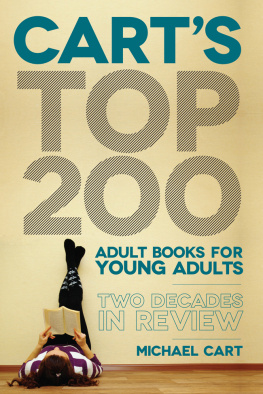
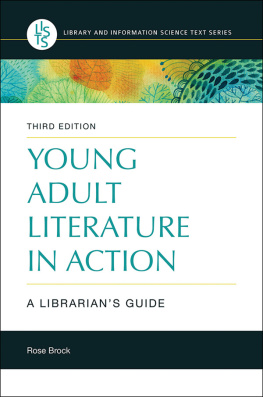



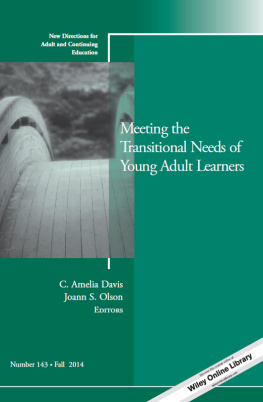
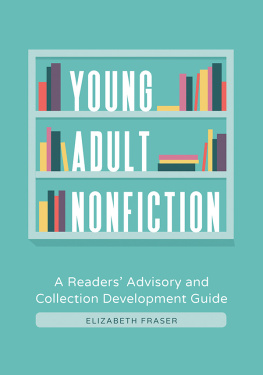

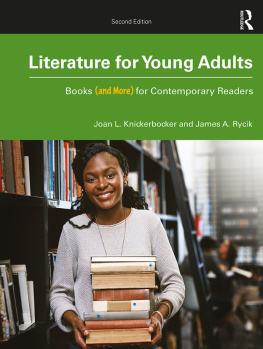

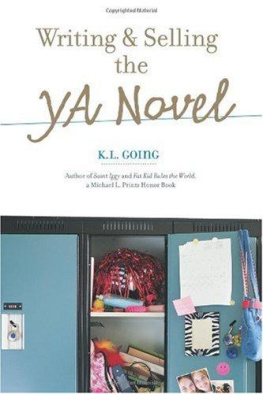

 An imprint of the American Library Association // Chicago // 2013
An imprint of the American Library Association // Chicago // 2013